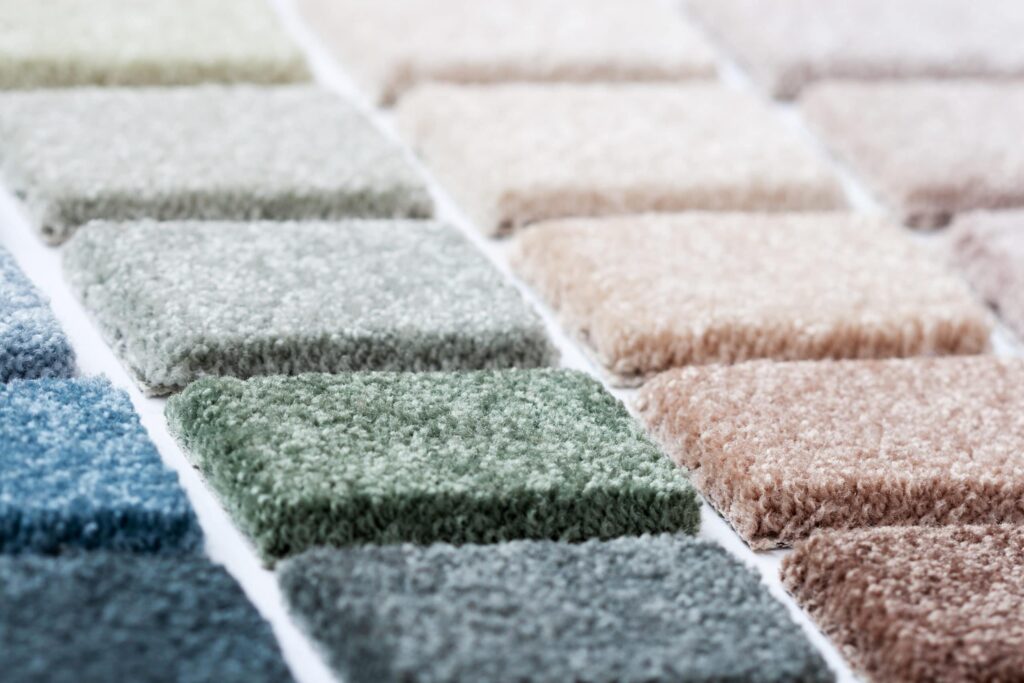There are many different types of carpet, but the most common carpet material is nylon. This has not always been the case. In fact, in 1950, 90 percent of all carpet and rug products were woven, not tufted. As the result of enormous advances in science, nylon carpet took over and flipped that number. Today 90 percent of carpets and rugs are made from tufted nylon, with only two percent made from woven fibers. Why is nylon carpet so popular?
What Is Nylon?
Nylon is a generic name for a family of synthetic polymers. It’s a plastic with “super-long, heavy molecules built up of short, continually repeating sections of atoms.” Scientists have mixed these polymers with various substances to create products with different properties for various uses, only one of which is carpet. Carpet is an important one, though!
The History of Nylon Carpet
The first synthetic polymer fiber was rayon which was invented in the 19th century by the Frenchman, Count Hilaire de Chardonnet, a chemist who was looking to create an inexpensive substitute for silk. Some decades later, in the early 1930s, Dr. Wallace Hume Carothers, the “Father of Polymer Science,” patented the first truly synthetic fiber while he was working for DuPont and exploring the possibilities of polymer chemistry. He called it Nylon 6,6. Toothbrush bristles were the first consumer consumer use for Nylon 6,6.
By the mid-1950s, DuPont had developed bulk continuous filament (BCF) nylon which was used to make modern carpet. With this invention, the inexpensive low pile looped carpet took off in popularity because the working class were building homes for their expanding families after the war and this was a decorative choice they could afford. It wasn’t just nylon that was being invented, it was new spinning techniques, dye and tufting equipment, printing processes, and carpet backings. All of these help launch the wall-to-wall carpet trend in interior design.
Nylon is made from crude oil. Crude oil is used to make nylon intermediates and then hexamethylenediamine and adipic acid which are then transformed into nylon salt. The nylon salt is manufactured into staple fiber carpeting or bulked continuous filament. Carpet mills spin the bulked continuous filament into yarn which is then tufted into carpet.
The structure of the manufactured fiber is important to its properties. Nylon 6,6 is a harder, more resilient fiber than Nylon 6 because its molecular structure is denser. This makes it better able to withstand both dirt and pressure and a great choice for areas of heavy traffic in the home, the workplace, or in public environments. It’s easier to maintain than other types of carpet, mildew resistant, and non-allergenic. Nylon does sometimes pill, though, and it can be prone to static.
While nylon carpet does not have the inherent elegance of an Aubusson carpet, it’s incredibly easy to care for and will last a long time under pretty rough foot traffic. It also comes in a wide variety of carpet styles from soft cut pile to short, nubbly berber.
If you have a nylon carpet remnant you’d like to turn into a rug, Bond Products has the Instabind carpet binding tape you need to complete that project, as well as a variety of rug backings to make sure it stays put on your floor. Nylon lasts practically forever, so a bigger remnant can be cut down and made into smaller rugs that can be put to good use anywhere in your house or garage. That’s the reason nylon is such a popular carpet choice.


